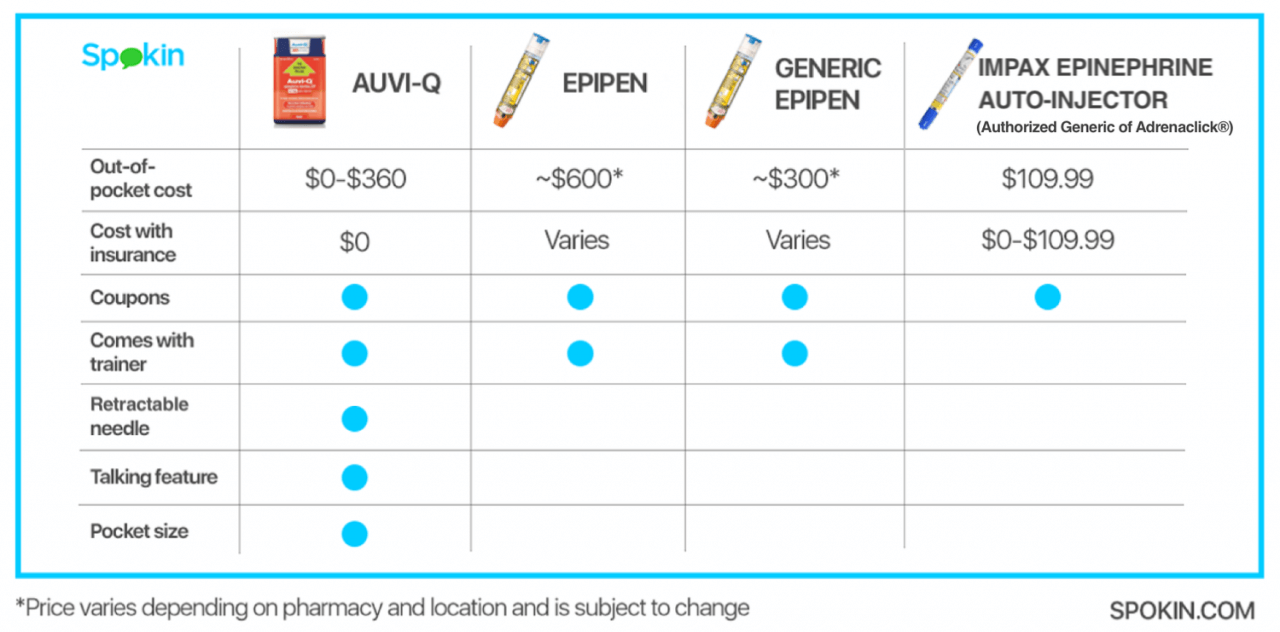Dr. Mary S. Morris MD, A.B.I.M

Dr. Mary is a partner of Allergy Associates of La Crosse and also serves as the Medicinal Advisor for Allergychoices, Inc., where she regularly consults with physicians on integrating sublingual immunotherapy (SLIT) in their practices as well as providing guidance and recommendations on the La Crosse Method™ Practice Protocol updates. To date, the La Crosse Method™ Practice Protocol has helped treat more than 195,000 allergic patients with sublingual immunotherapy.
Throughout her career, Dr. Mary has been integral in bringing increased attention and acceptance for sublingual immunotherapy in the medical and research communities. She has participated in numerous studies in further validating the science behind sublingual immunotherapy. Most recently Dr. Mary worked with Dr. Ruchi Gupta of Lurie Children’s Hospital on a study showing the impact of SLIT on pediatric patients with severe peanut allergy.
Q: What is SLIT?
A: Sublingual immunotherapy treatment (SLIT) uses drops that are made with antigen [allergen] extracts in a liquid base, typically with glycerin. They are administered under the tongue and held there for 30 seconds. Like allergy shots, SLIT doses are increased slowly until your body has built a tolerance to the offending allergen under treatment.
Q: Why and when did you start practicing SLIT?
A: Since the practice was founded by my father, I’ve always been interested in SLIT. I joined Allergy Associates of La Crosse in 1989 and have been a part of a very rewarding experience, as I help treat the underlying cause of allergic diseases.
My father opened Allergy Associates of La Crosse in 1970 but began his involvement in the therapy in the late 1960s. Since he opened the clinic, we’ve added more doctors and have been refining our treatment and method.
Q: The clinic has developed its own method for SLIT treatment. Can you explain the La Crosse Method™ Protocol and how it is different?
A: Through our years of research and experience, we’ve developed the La Crosse Method™ Protocol, which is a tool to diagnose and treat allergies (through the use of allergy drops)—it’s the most widely and clinically used SLIT protocol in the U.S. Our allergy drops are not a one size fits all treatment, but rather we customize drops based on a patient’s allergy severity.
With more than 45 years of clinical use and research, we’ve developed a deep understanding of our patients and what factors are most effective to help them tolerate allergens that make them ill.
Q: The FDA has only approved a handful of SLIT forms, so most are not FDA-approved. Can you talk about that and how it affects the cost of the treatment?
A: The SLIT drops contain the same antigens that are used in allergy shots, except we put them in drops under a patient’s tongue which is called “off-label.” It’s not uncommon for doctors to use this off-label method.
The cost of the treatment will depend on the insurance company. An insurance company may cover the cost of the office visit and any lab testing, but since the FDA only approves SLIT in tablet form for dust mites, grass, ragweed, cat dander, and tree pollens, SLIT allergy drops are considered off-label treatment.
The lack of FDA approval for this use case should not put off patients as it is both legal and highly common. Many doctors use the off-label approach for medication such as prescribing blood pressure medication for migraines or arthritis medicine for shingles.
Q: Which allergens can you treat with SLIT?
A: Using the La Crosse Method™ Protocol, we’ve seen great results treating people with a wide variety of allergies to things like foods, animals, pollen, molds, and dust. SLIT also can treat environmental or seasonal allergies as well as allergy-related health conditions like asthma and eczema.
In addition, our protocol allows us to treat for multiple allergies across a number of categories such as food, environmental, and seasonal allergies. It’s very unusual to find patients who have issues with only one allergy, and we find the benefit in treating allergens simultaneously as allergists have done historically with injections.
Q: How does SLIT work?
A: Allergy drops are placed under the tongue and affect the immune system through very specialized (dendritic) cells found under the tongue. Research shows these cells are a friendlier, more effective, and safer route for developing long-term allergen tolerance, making it an ideal option. Administering the allergy drops multiple times per day is a key factor affecting treatment outcomes. Gradually, the dosage increases until the patient develops a tolerance to the allergen that has affected them.
Q: How long is the treatment?
A: Treatment varies per patient since everyone’s allergies are different, but typically most patients take allergy drops every day for three to five years. If patients follow their treatment plan (we recommend three times per day to start) and are diligent with their dosages, they should start seeing improvements in a few weeks to a few months after starting SLIT.
Q: How is SLIT different than OIT (Oral Immunotherapy)?
A: Oral immunotherapy is typically a powdered form of the food. It is mixed with food or drink. It is not held in the mouth or under the tongue. It is swallowed. The amounts given for peanut allergy OIT are up to 4000 milligrams. So the dosage with SLIT is much smaller. The top dose with SLIT for peanut allergy is 2 milligrams. Because of the small amount of antigen (again, based on patient testing), we don’t get the potentially more severe side effects that occur with OIT. The glycerin may also have a protective effect. Multi-antigen inhalant drops and food drops treat all allergies at once. Since most allergy sufferers are allergic to more than one thing, most take multi-antigen drops that are customized for each patient based on specific antigen and level of sensitivity.
Q: How many doctors currently practice SLIT and how can our users find them?
A: We have seven doctors at Allergy Associates of La Crosse. The average patient coming to our clinic travels 250 miles one way, so we see patients from all over the country. For travel details please see our transportation and lodging pages on our website.
In addition to treating complex allergic patients from around the country, the physician partners from Allergy Associates of La Crosse have remained dedicated to sharing their knowledge of sublingual immunotherapy with other physicians. This dedication led to the development of Allergychoices, Inc., a healthcare company that provides tools and services to enable physicians to provide sublingual immunotherapy to their patients, and gives allergy sufferers information and access to practices offering sublingual immunotherapy. For those unable to travel to La Crosse, users can visit Allergychoices to find a La Crosse Method™ Protocol trained physician near them.
Q: What type of results have you seen?
A: It depends on the goal of the patient and family. I tell parents that the goal is to keep the child safe from an accidental exposure. We know that SLIT can do that today. It’s not always possible to gain enough tolerance to eat a peanut butter sandwich every day. Most parents are good with that.
Researchers often look at a goal of being able to drink an 8 oz. glass of milk, for example. For many families, being able to consume just part of that is a huge benefit.
We’re so happy to hear from parents about the child who accidentally took a bite of the wrong cookie and did not react!
Q: Final Thoughts?
A: Having an allergy, especially a food allergy, shouldn’t mean you will have life-long problems. Patients respond well to SLIT when they follow a regime, and as a doctor, it is such a great experience to know that you’ve helped treat the underlying cause of their disease. Unlike symptom relieving medications, immunotherapy can provide long lasting benefits even after the course of treatment is completed.
Where you can find Dr. Mary:
Allergy Associates of La Crosse
2727 Midwest Drive
Onalaska, Wisconsin 54650
(608) 782-2027
Website: Allergy Associates of La Crosse
Facebook: Allergy Associates of La Crosse
Visitor Hotel Info: Includes Patient Discount info + Allergy Friendly Hotel Guide!
Other resources and articles:
Article: SLIT for Peanut Allergy: What we’re learning from clinical experience
Allergy Associates of La Crosse FAQ
YouTube Video: Dr. Mary Morris on Sublingual Immunotherapy Treatment
Karin Teglia

Karin is an active advocate and consultant in the food allergy community. Her numerous contributions include serving as co-chair of the FARE Chicago Spring Luncheon, past honoree of the FAI Gala, and former FAI Chicago Advisory Board member. Karin is a CPA, attorney, and former Senior Vice President of Finance at the McDonald’s Corporation. She is the mother of two middle school age daughters. Karin’s daughter started SLIT therapy in May 2010.
Parent of food allergic middle school age daughter
Allergens: Peanuts
Location: Burr Ridge, IL
Q: Why did you choose SLIT for your daughter?
A: We decided to do SLIT for our daughter after visiting Allergy Associates of La Crosse (AAOL). We liked that the therapy would treat her environmental allergies and food allergy simultaneously. Also, it was easy to administer, had a long record of safety, and unlike a clinical trial, the protocol was adjusted for the patient’s needs over time. Dr. Mary and Dr. Theodoropoulos explained their philosophy of the “total load” of allergens and how important it was to eliminate the environmental allergies because they weighed down the immune system. By using SLIT to eliminate those triggers, my daughter would be better able to respond to SLIT treatment for food allergies. They also explained that the way they administered SLIT was “low and slow”— a low dose over a long period of time—which they believed would have a long lasting effect on the immune system without causing serious side effects. The doctors were thorough, the treatment was comprehensive, and the science behind it made sense to me.
Q: Have you experienced any drawbacks?
A: We did not experience any drawbacks. However, it is a multi-year process and takes commitment to adhere to the daily routine.
Q: What is the length of therapy and frequency of treatments?
A: My daughter started SLIT in May 2010, taking drops under her tongue three times a day. We visited AAOL once a year on average. My daughter’s environmental allergies and asthma were better within the first year and mostly eliminated by the end of two or three years. After three years my daughter did a 15 peanut challenge which she did not pass, but showed some immunity. After five years she passed a 20 peanut challenge.
Q: After graduation, is there maintenance required to maintain tolerance?
A: Yes, she eats five peanuts three times a week.
Q: Would you recommend SLIT?
A: Yes! Definitely. I’ve referred over 50 people to AAOL for SLIT treatment. I am very grateful for the care and treatments that we received there.
Q: Final Thoughts?
A: AAOL’s administration of SLIT to my daughter changed her life. She does not live in fear that a trace amount of peanut, something that she cannot see, taste, or smell, could take her life. We are hopeful that one day soon, all food allergic patients will be in the same position.
Eun Lee

Eun is the Global Head of Syndicate at Millennium Management. She is an active fundraiser in the food allergy community and co-founder of FARE Chicago. Eun is the mother of four children, two of which have food allergies. Eun’s two food allergic children started SLIT treatment in 2011.
Parent of food allergic middle school age son and elementary school age daughter
Allergens: Tree Nuts, Peanuts, Shellfish
Location: Wilmette, IL
Q: Why did you choose SLIT for your kids?
A: SLIT treatment has been around for decades and seemed to be a more sustainable treatment regarding how the body acclimates. The allergy drops are convenient and nonintrusive—and there is an element of flexibility to the treatment. We visited Allergy Associates of La Crosse (AAOL) before we started the treatment and met other patients who had experienced powerful outcomes which was helpful in deciding if it was the right direction for our family. The clinic’s long track record of success and their ability to treat multiple allergies at once was a big draw. In addition to the tree nut, peanut, and shellfish allergies, both children had soy, milk, egg, airborne, and environmental allergies that the clinic was able to treat simultaneously.
Q: Have you experienced any drawbacks?
A: The location is challenging for us—it’s a 10-hour drive round trip from Chicago, but we wanted to go to the best doctors. When you visit the clinic, you typically spend the entire day there which adds to the commitment, but this is just a part of the treatment process, and it is worth it in the en
Q: What is the length of therapy and frequency of treatments?
A: My two children have been doing SLIT for almost six years now. For the first four years we visited the clinic every six months, but this past year we haven’t been back—we just continue the drops with refills and increased concentration.
Q: What were the costs of treatment?
A: The drops can get expensive when treating multiple children for many allergens and they are not covered by insurance. There are also some additional out of pocket costs of in-clinic tests and doctor consultations as well as travel and accommodations.
Q: Would you recommend SLIT?
A: Yes! There is very little downside and risk to SLIT; it also feels like a more organic, natural approach. SLIT offers a low risk of reaction, does not affect my kids’ daily routine, and is manageable (the drops have no taste and are easy to transport). It’s a kid-friendly treatment!
Q: Final thoughts?
A: After four years of therapy, my daughter Eden was successfully food challenged last year for tree nuts, peanuts, and shellfish.
My son Dae, who’s had almost six years of therapy, has yet to be food challenged, but his IGE numbers have dropped dramatically for most nuts and shellfish. Although my son hasn’t been food challenged for peanuts (with his IGE still quite high), he is exposed to a quarter of a peanut per day through the allergy drops, which is amazing to me. It makes me hopeful that he is getting desensitized, and one day will be able to handle accidental ingestion.
Q: Does Eden now eat tree nuts, peanuts, and/or shellfish? How do you handle foods in the house given your son’s allergies?
A: Eden eats one peanut, walnut, almond, and pistachio daily to maintain immunity. We give them to her after Dae has left for school to protect him from any allergic reactions.







